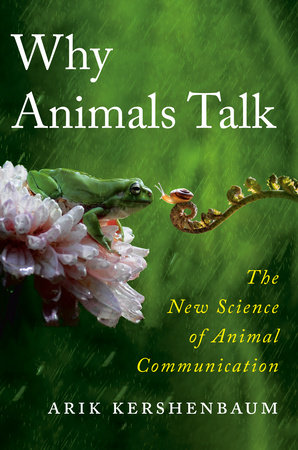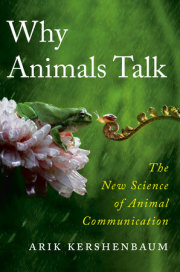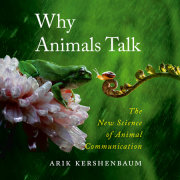1. WolfIt's very cold. Even among the dense trees where there's no wind, the air stings. At first, the silence feels so intense you could be the only creature in the world, never mind in the forest-except that little rustlings of rodents in the snow remind you that there is life all around, albeit indifferent to your presence. Maybe there are other creatures out there too. Larger creatures. Soon, a low-pitched howling like the wind begins, rising slowly and mournfully before the pitch falls again. Another animal joins in. It's an unmistakable sound and it sends a shiver through anyone hearing it. They're calling across what seems to the casual observer an empty world, but this is their home. There is nothing that reminds us of the wilderness quite like hearing the wolves calling. What are they saying? Are they as lonely as they sound? As threatening? I want to understand these creatures, who they are, what they are saying, why they do what they do. They are so different from us yet so similar. Of all the wild animals, these are the ones with which we have the closest bond. Why? Because we've taken their relatives into our homes as four-legged companions and molded them to our way of life, something that would not have been possible if we did not share so much to begin with. To understand wolves is to understand ourselves. So, where do we begin?
Humans respond viscerally to wolf howls. More than any other animal communication, this sound evokes feelings of a spiritual connection with nature. And feelings of danger. Personally, I find wolf howls beautifully calming. Here is a creature perfectly at home in a harsh environment. They need no warm house or advanced technology to survive. They can wander the forests just as we would wander our local neighborhood, without worrying about being too far from home. What features of body and mind do wolves need to survive where they do? A human in the same woods would find them terrifying, as a wolf would no doubt be terrified and lost in suburban London. The forest is a desolate place, but when you are surrounded by family, it is familiar and comforting. Bit by bit, animals evolve to take advantage of resources that others shun, from the frozen wastes to the deepest ocean. There's food in these forests, but to catch it, to survive, you must work as a team, rely on your friends and family, otherwise all is lost. Wolves do not howl to each other simply to threaten or to intimidate, but to communicate as casually as we might text a friend to find out how they're doing, where they're going. Shall we catch a bite to eat, or just hang out? This is an animal that wanders seemingly without concern dozens of miles over mountains and through forests in a single day, and yet never loses touch with friends and relatives, as long as they can howl. The howl defines the wolf as much as its fangs or fur. It is an essential tooth in the cog of their existence, meshing perfectly with the cog of their environment. You can't survive in the snow without fur. You can't survive in the forest without howling.
Wolves are our introduction to the world of animal communication. They are familiar enough to strike a chord but alien enough to show just how different from us animals are. They have that key characteristic for complex communication to evolve: they are highly social. Living in a group is the only way for them to survive in their environment, but group living has drawbacks too. They must negotiate the social environment, as well as the physical one, and they do that using complex communication. Do all wolf howls sound the same to you? They vary almost infinitely and carry that variation reliably over many miles. We can look at their howls and investigate how much meaning they contain, and how they evolved to be complex enough to contain any meaning at all. If we can do all that, can we tap into this? Can we interpret the communication that is their private domain, and then reply in kind?
Who are the wolves?Wolves are one of the most difficult animals to study in the wild. You might have thought that the frontiers of scientific knowledge lie in the most distant galaxies, or in the heart of the atom, or at the depths of the ocean. On the contrary. We know comparatively little about the behavior of one of the most familiar animals on the planet. Wolves are exceptionally cautious creatures and avoid humans far more than the horror movies would have us believe. I'm often asked, "Aren't you scared that the wolves might attack you when you're out in the wilderness?" Well, no; no more than I fear skidding off an icy mountain road (actually, I am considerably less scared of the wolves than of the roads). Despite their sharp fangs and claws, and their ability to bring down elk, and even massive bison, wolves are wary. That is not surprising. Like most top predators, they live on a knife-edge between survival and starvation. Their lives hinge on the success or failure of a hunt, and a hunt can, and often does, end in near-fatal injuries for the predator as well as for the prey. In a fight for its life, a bison can use kicking hooves and sharp horns with lethal effect. For a wolf, caution is paramount. Humans are unfamiliar, unpredictable, and best avoided. Given that wolves can travel with breathtaking efficiency over rugged landscapes and deep snow, it's no wonder that, if they don't want to be near you, you won't get anywhere near them. Add to that the fact that much of their activity is at night or at dusk, and you can see that there must be much we still don't know about their lives.
Wolves have a special place in the hearts of many. We have all seen them on TV documentaries or in zoos, and some of you may have caught glimpses of them in the wild or heard snatches of their haunting howls. But even zoologists like me don't have a very clear window into the life of a wolf. Perhaps the most reliable and detailed insight into what it means to be a wolf comes from the long-term scientific studies of the wild populations in Yellowstone National Park in the USA. Here, scientists and volunteers follow wolves daily, observe them, get to know the individuals, and track their comings and goings, the ups and downs of their packs, over years and decades. Ernest Thompson Seton, the great naturalist and animal writer of the end of the nineteenth century said:
How many of us have ever got to know a wild animal? I do not mean merely to meet with one once or twice, or to have one in a cage, but to really know it for a long time while it is wild, and to get an insight into its life and history. The trouble usually is to know one creature from his fellow. One fox or crow is so much like another that we cannot be sure that it really is the same next time we meet.
There's deep truth in this. If you think about the songbirds or the squirrels in your garden, do you really know one from the other? Without recognizing individuals, the most we can know is an averaged, smeared-out knowledge of all members of a species put together. Spotting individuals, separating them and their behavior, and recognizing what they do as individuals is central to studying animal behavior as a scientist. To understand animals is to understand the stories of animals as individuals, observed in the wild, but recognized as separate from their brothers and sisters, and from strangers of the same species-who might look the same to us, but can be perceived as mortal enemies by the animals themselves.
The team that has studied the Yellowstone wolves since their reintroduction in 1995 spends long hours in freezing conditions, watching through spotting scopes as the animals do almost nothing. The wolves relax, play, or perhaps investigate some branch sticking out of the snow. Sometimes they hunt; sometimes they fight; sometimes they mate. But mostly they just hang out and be themselves. It's through those interactions-when the animals aren't doing anything special, just being themselves-that we can see the individual, and in that way see what it is to be an animal in the wild. It's easy to slip into thinking of wolves as being just communal hunters. But they are actually communal players, communal sleepers, communal resters, and, of course, communal singers.
Like many social animal groups, wolf packs are mostly extended families, where children remain with their parents-sometimes for years or sometimes leaving sooner to seek their fortunes on their own. Family relationships are a powerful force driving cooperative behavior. The animals have evolved to support and help their kin, as this is in their own interests, making sure that their genes are represented in future generations through their nieces and nephews, as well as through their own children. Family social groups are extraordinarily common across the animal kingdom, from meerkats to beetles. And, of course, humans. We want our children to learn, to enjoy their childhood, and to grow to be healthy and successful. Not to mention to support us in our old age-even this occurs sometimes in other animals, and in wolves especially, where older or infirm animals take over caring for the pups while the others are hunting, and are brought a share of the kill as well. Wolves are special because wolves can only survive in groups, and the larger the group the better.
When you feed on prey much larger than yourself (elk, bison), you can't hunt alone, and the classic niche of the wolf is in the long chase, multiple hunters wearing down the unfortunate caribou until it is possible to disable the animal, or simply bring it down by sheer weight of numbers. However, it turns out that, for wolves, large hunting parties don't greatly increase the chance of a successful hunt. A group of four seems to be about right for catching most prey, although it may be that in extra-long chases against animals of exceptional stamina, having substitutes to provide fresh legs halfway through the pursuit could be of some help. Yet wolves often hunt in packs much larger than four. That's because packs aren't just for hunting. A wolf pack is a complex social entity, providing benefits right across the board, without which life would be much harder for everyone.
For one thing, once you've got that caribou, the rest of the scavenger world descends on the carcass hoping to snatch a share. Coyotes, ravens, even bears. That large pack might not be necessary to bring down the prey, but it's essential in keeping the outsiders at bay. And, of course, other wolf packs are also out there competing for your territory and your kills. When you are in constant conflict with neighboring packs, there is strength in numbers. It's both the size of a wolf pack and the age and experience of its members that determine the pack's strength, and the chances of individual wolves surviving and reproducing. This is particularly true during encounters between packs, where the likely outcome (victory or defeat, or perhaps détente) is carefully assessed by the rival groups before entering a potentially costly conflict. Finally, as wolf packs are a kind of extended family, aunts and uncles have a role in helping to protect, and provide food for, their nieces and nephews. If you're seeing parallels with human social organization, you're not wrong.
For all the patent benefits of gathering in a large group, it's clear that there will also be squabbles, competition, and conflicts of interest. The more animals that live together-in particular, the more
unrelated animals that live together-the more potential for conflict within the group itself. What to do? Wolves cannot survive in small groups but cannot survive in large congregations either. Just as in human societies, wolves must negotiate social relationships, sometimes plead, sometimes cajole, and sometimes threaten. Cooperation requires effective communication-both of the details of the cooperative task at hand and, importantly, of the fact that this cooperation will be a friendly activity, not an aggressive one. We are instinctively attuned to this, because humans have the same need to make clear to others not only that we want to help each other but also
how we want to help. On the other hand, no less important is effective communication of unfriendly intent-it's much better (for both parties) for a conflict to be resolved by mutual agreement than by violence. A little bit of fist shaking is better than an all-out brawl. You could say that "gunboat diplomacy" has its benefits: the larger and more powerful wolf pack makes the less powerful pack think twice about starting a conflict. Effective social communication helps keep a pack cooperating peacefully, but also gives an animal an advantage when interacting with stranger animals. Adolescent wolves leaving home to make their fortune need to find a mate, perhaps to join another small pack if there's no other choice available. The more socially adept loner is going to be the more successful loner. Communication is the glue that holds this complex society together, and this is no less true for the wolves of the Rocky Mountains than it is for the humans of New York. The more complicated and fraught an animal society is, the more it relies on complex communication to keep the paws padding smoothly.
As we dive into the communication of wolves-and so into their social environment, and so into our own human social environment-we have to ask questions to which the answers aren't yet clear. To understand why wolves howl the way they do, we first need to understand why wolves howl at all. And for that we need to understand what a howl is.
Communication in the packLike any animal, and particularly any social animal, wolves communicate using a diverse range of tactics: messages sent by sound, sight, and smell, with subtle variations in meaning (perhaps imperceptible to humans), but overall aimed at improving an animal's fitness to survive and reproduce. What we loosely call "body language" overlaps constantly with more overt forms of communication. Pups signal their need (or desire) to be fed, with begging postures and cute but slightly pathetic whining. Adults signal their desire to mate-or not to mate-largely by posture, but a female will not hesitate to repel a male with an angry growl if she's not in the mood. A wolf pack is a busy, complex unit of many interacting animals, all jockeying to be understood. When close to each other, wolves use a wide range of sounds: noisy growls and barks that make them sound more like dogs, as well as shorter, softer modifications of their iconic howls: "whines," "whimpers," and "yelps" being some of the terms that scientists use to describe such a wide range of sounds. At close quarters, it's easy to pick up on the subtle differences between these different sounds, and that's why they're useful-as any dog-owner can testify, an angry growl sounds decidedly different from a growl while playing tug over a stick.
Copyright © 2024 by Arik Kershenbaum. All rights reserved. No part of this excerpt may be reproduced or reprinted without permission in writing from the publisher.









